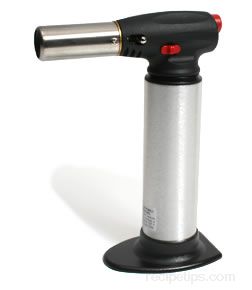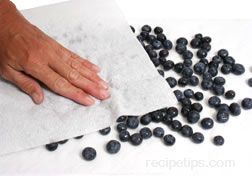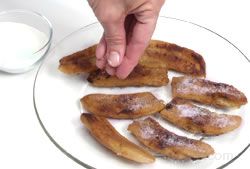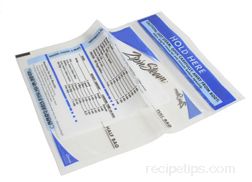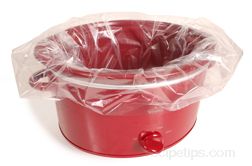Cooking Torches are typically built with safety locks, holding stands so they don't need to be laid down on counters, contours for ease of handling, anti-flare flame and flame guard features, and continuous flame lock levers which keep a constant rather than an intermittent flame burning. Some of the typical foods that use a Cooking Torch include: desserts such as crème brûlée, baked Alaska, or desserts with confectionary toppings; foods with melted cheese and breaded toppings such as onion soup gratinée or vegetable gratins; blackened vegetables; and any other food requiring a surface dressing from heat. Desserts such as crème brûlée are heated over the surface to melt the sugar coating into a caramelized topping. Similarly, chocolate ganache or cake tarts are heated to give the dull surfaces a glossy appearance. Desserts with meringue toppings or toasted marshmallows which need to be browned are easily heated with a Cooking Torch. Cheese and bread toppings on onion soups, vegetable gratins, and small cheese covered toasts are often melted with a torch so the cheese has a thick, smooth and creamy-textured result as it rests on the surface of the food. Roasted vegetables such as chile peppers or sweet peppers also use the torch to provide the darkened roasted texture and flavor to the outside skins.
Loading
Cooking Torch
Produced as a finishing tool for baked goods, this utensil is most often used to add the golden tan surface to crème brulée desserts by caramelizing sugar sprinkled over the top. Small in size, the Cooking Torch uses butane gas for the flame emitted from the torch. The butane gas, which is purchased separately, is packaged in a pressurized container that enables the torch to be easily filled with pressurized gas for the flame. After being filled an igniter is activated to start the flame which can then be adjusted from 1/2 to 1 inch length for best results. Available in several sizes, the Cooking Torch can be purchased as a "mini" torch or a "professional" torch, the difference being mainly in the size. The larger versions will hold more fuel as well as provide an amount of heat and intensity to the flame that can be better controlled when browning foods. Since the torch is filled with a flammable fuel, it is important that safety procedures be followed when using this utensil. Understanding the features, how to operate it properly, storing it properly, and keeping it away from small children are a few of the necessary requirements for a Cooking Torch.
There currently aren't any reviews or comments for this term. Be the first!
Advertisement
Advertisement

